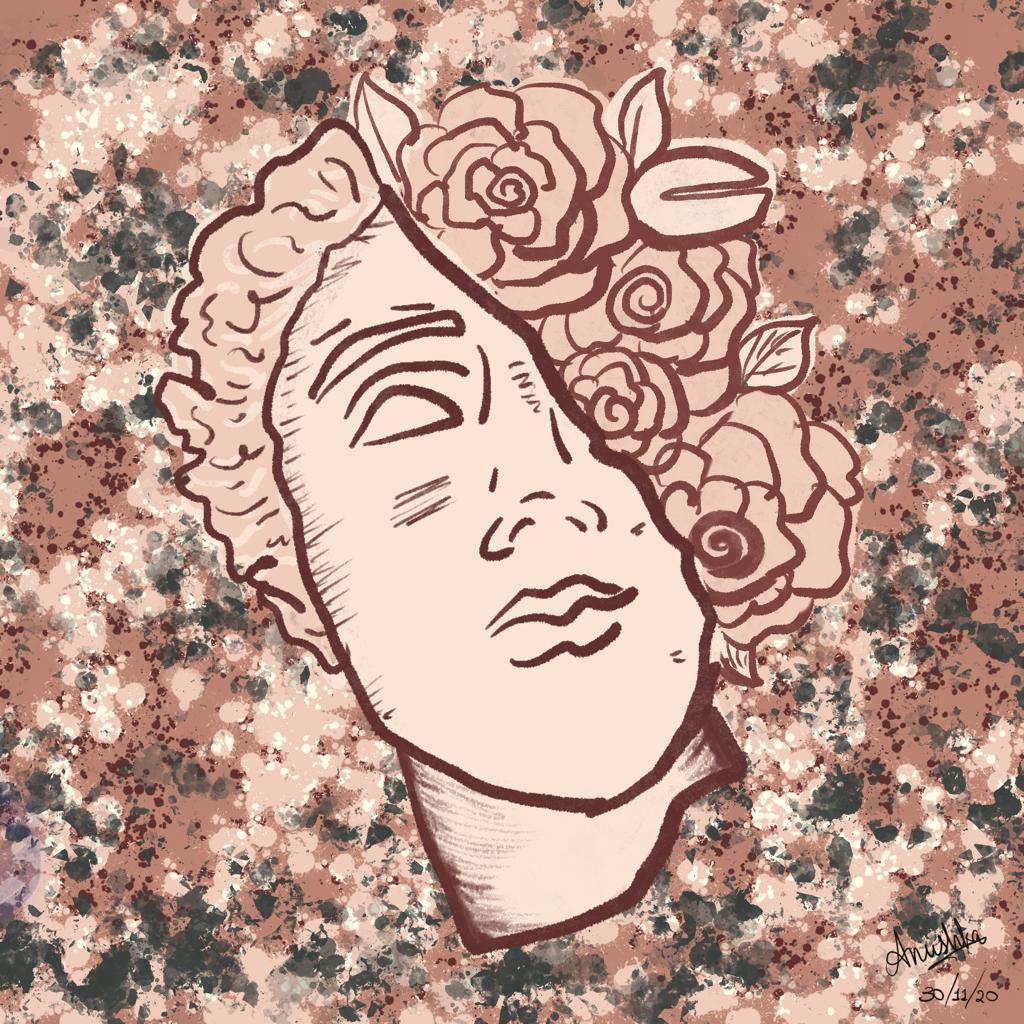
If there’s one thing my mother was strict about growing up, it was keeping my space organized. She would often repeat, “A messy desk is a messy mind,” and I would roll my eyes in response. Of course, my mother isn’t the first to share this belief, and many others hold the same view. Most famously, Albert Einstein once said, “If a cluttered desk is a sign of a cluttered mind, of what, then, is an empty desk a sign?” While Einstein didn’t argue that clutter is inherently bad, he did suggest that how we organize our spaces can reflect our mental state. Research does suggest that there’s some truth to this. But interestingly, recent studies show that a bit of disorder can also have its perks, like boosting creativity.
It comes to no surprise that our personal living space mirrors our own personal characteristics. Gosling and colleagues (2005) explored this idea, finding that the way we organize (or don’t organize) our living areas can reflect various personality traits. In their study, they developed the Personal Living Space Cue Inventory (PLSCI) to systematically analyze how various elements within our living environments correlate with specific personality characteristics. They found that a cluttered space often indicates lower conscientiousness, while a highly organized area indicates higher conscientiousness. So, if you’re naturally a bit messy, it might just be an expression of who you are. Building on this, the Differential Susceptibility Theory suggests that individuals vary in their responsiveness to environmental influences. Some people are more ‘fixed’ in their ways, while others are more ‘malleable’ and sensitive to their surroundings. This means that not everyone is negatively affected by a cluttered workspace; some might thrive just as well, depending on their inherent sensitivity to environmental factors. This perspective helps us understand why certain individuals remain productive in less organized settings, while others might find such environments overstimulating. So, a messy living space might not be a sign of “internal messiness” , but rather an expression of personal preference.
But, it turns out that preferring messiness could be more than just a question of taste – it could also spark creativity. Research has found that cluttered environments can boost novel problem-solving. A study by Vohs et al. (2013) discovered that people in messy rooms not only came up with more creative solutions, but also preferred products labeled as “new” rather than “classic,” unlike those in tidy spaces. One explanation for these findings is that messiness shakes us out of tradition, encouraging us to think outside the box. But research also proposes different explanations. Van Moorsel (2022) suggests that messiness encourages mind-wandering, which in turn enhances creativity. In essence, being surrounded by unconventional and unexpected objects from a messy environment, triggers a new state in the brain, where thoughts deviate from the here and now, and instead focus on seemingly unrelated external events. This ‘‘deviation’’ is known as mind wandering (Cotroneo, 2014). Mind-wandering is often linked to creativity because it allows the mind to make connections between unrelated ideas, which can lead to novel insights. Moreover, when we engage in mind-wandering, it activates the brain’s default mode network (DMN), which is associated with self-generated thought, such as daydreaming or spontaneous problem-solving. The DMN helps facilitate the processing of these externally inspired ideas, which is essential for creative thinking (Ramsøy, 2024). So while tidy spaces might help some to concentrate and stay organized, they can also stifle creativity by keeping others too boxed in. A little mess might just be the key to unlocking the creative genius inside.
So, what’s the takeaway here? While messiness might be seen as a sign of “internal clutter” (especially if you associate lower conscientiousness with mental chaos), it’s not necessarily a bad thing. Messiness isn’t necessarily bothersome for some, and can even be a catalyst for creative thinking. At the end of the day, workspaces should reflect personal thinking styles, rather than societal expectations. I’ll admit, it would have been nice to have had a more lenient mom who didn’t mind the mess during my early teenage years, but I now appreciate her insistence on neatness. These days, I prefer a clean desk and can’t say I miss the disarray. But still, who am I to criticize someone who finds inspiration in the chaos?
If there’s one thing my mother was strict about growing up, it was keeping my space organized. She would often repeat, “A messy desk is a messy mind,” and I would roll my eyes in response. Of course, my mother isn’t the first to share this belief, and many others hold the same view. Most famously, Albert Einstein once said, “If a cluttered desk is a sign of a cluttered mind, of what, then, is an empty desk a sign?” While Einstein didn’t argue that clutter is inherently bad, he did suggest that how we organize our spaces can reflect our mental state. Research does suggest that there’s some truth to this. But interestingly, recent studies show that a bit of disorder can also have its perks, like boosting creativity.
It comes to no surprise that our personal living space mirrors our own personal characteristics. Gosling and colleagues (2005) explored this idea, finding that the way we organize (or don’t organize) our living areas can reflect various personality traits. In their study, they developed the Personal Living Space Cue Inventory (PLSCI) to systematically analyze how various elements within our living environments correlate with specific personality characteristics. They found that a cluttered space often indicates lower conscientiousness, while a highly organized area indicates higher conscientiousness. So, if you’re naturally a bit messy, it might just be an expression of who you are. Building on this, the Differential Susceptibility Theory suggests that individuals vary in their responsiveness to environmental influences. Some people are more ‘fixed’ in their ways, while others are more ‘malleable’ and sensitive to their surroundings. This means that not everyone is negatively affected by a cluttered workspace; some might thrive just as well, depending on their inherent sensitivity to environmental factors. This perspective helps us understand why certain individuals remain productive in less organized settings, while others might find such environments overstimulating. So, a messy living space might not be a sign of “internal messiness” , but rather an expression of personal preference.
But, it turns out that preferring messiness could be more than just a question of taste – it could also spark creativity. Research has found that cluttered environments can boost novel problem-solving. A study by Vohs et al. (2013) discovered that people in messy rooms not only came up with more creative solutions, but also preferred products labeled as “new” rather than “classic,” unlike those in tidy spaces. One explanation for these findings is that messiness shakes us out of tradition, encouraging us to think outside the box. But research also proposes different explanations. Van Moorsel (2022) suggests that messiness encourages mind-wandering, which in turn enhances creativity. In essence, being surrounded by unconventional and unexpected objects from a messy environment, triggers a new state in the brain, where thoughts deviate from the here and now, and instead focus on seemingly unrelated external events. This ‘‘deviation’’ is known as mind wandering (Cotroneo, 2014). Mind-wandering is often linked to creativity because it allows the mind to make connections between unrelated ideas, which can lead to novel insights. Moreover, when we engage in mind-wandering, it activates the brain’s default mode network (DMN), which is associated with self-generated thought, such as daydreaming or spontaneous problem-solving. The DMN helps facilitate the processing of these externally inspired ideas, which is essential for creative thinking (Ramsøy, 2024). So while tidy spaces might help some to concentrate and stay organized, they can also stifle creativity by keeping others too boxed in. A little mess might just be the key to unlocking the creative genius inside.
So, what’s the takeaway here? While messiness might be seen as a sign of “internal clutter” (especially if you associate lower conscientiousness with mental chaos), it’s not necessarily a bad thing. Messiness isn’t necessarily bothersome for some, and can even be a catalyst for creative thinking. At the end of the day, workspaces should reflect personal thinking styles, rather than societal expectations. I’ll admit, it would have been nice to have had a more lenient mom who didn’t mind the mess during my early teenage years, but I now appreciate her insistence on neatness. These days, I prefer a clean desk and can’t say I miss the disarray. But still, who am I to criticize someone who finds inspiration in the chaos?

